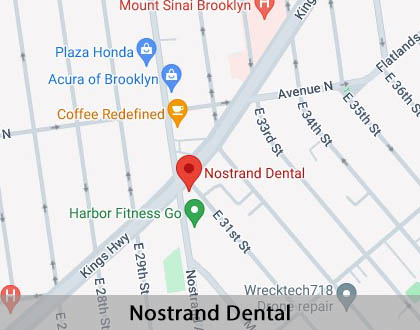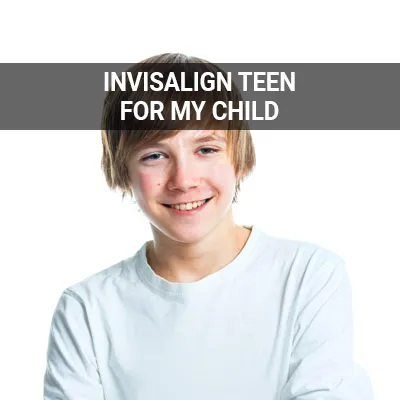Invisalign vs Traditional Braces Brooklyn, NY
When it comes to straightening your teeth, there are more options on the market now than ever. Two of the most popular options are Invisalign® and traditional braces. While neither is definitively better than the other, both have their own set of pros and cons.
Invisalign and traditional braces are available at Nostrand Dental in Brooklyn and the surrounding area. We can help provide you with the best treatment for your unique case. Call us today at (718) 513-9685 to schedule an appointment or learn more about our services.
Major Differences
When considering Invisalign and traditional braces, patients should first realize that no one treatment is better than the other. The right treatment will vary on a case-by-case basis. The first step to determining what is best for a patient is an accurate diagnosis. From then on, Nostrand Dental can consider the patient's treatment process goals, the patient's lifestyle needs, and more.
The main distinguishing factor between Invisalign and traditional braces is visibility. Invisalign is a more discreet option, while traditional braces will remain evident in the patient's mouth. Additionally, Invisalign trays are removable, while traditional braces will remain attached to the patient's teeth. Consequently, patients with traditional braces may need to make some dietary changes during their treatment. In any case, both Invisalign and traditional braces will require patients to maintain a consistent oral hygiene routine and wear retainers after completion.
“When considering Invisalign and traditional braces, patients should first realize that no one treatment is better than the other.”
Length of Time
Though the result of braces and Invisalign remains the same, the time it takes for each treatment differs. Traditional braces require approximately 18-24 months of treatment. The average treatment time for Invisalign patients stays between 12-18 months, depending on the issues that need correcting.
For patients with minor misalignment, their Invisalign treatment may be finished as quickly as six months. Invisalign Teen must be worn between 20-22 hours a day, every day, throughout treatment. With both braces and Invisalign, the total treatment time varies.
“Though the result of braces and Invisalign remains the same, the time it takes for each treatment differs.”
Effectiveness
Both Invisalign and traditional braces remain effective at straightening teeth but differ in their approach. Metal braces rely on brackets, wires, and elastics to shift teeth. Once removing braces, most patients must wear a retainer every night to maintain straight teeth. If patients do not wear the retainer, their teeth may shift back to previous positions.
Invisalign uses removable plastic aligners throughout the treatment. As the teeth shift, new aligners are worn to continue treatment. Invisalign requires patients to wear their aligners for 20-22 hours a day, whereas braces require 24 hours a day commitment. Patients do not have to wear a retainer after the Invisalign course of treatment.
“Both Invisalign and traditional braces remain effective at straightening teeth but differ in their approach.”
Check out what others are saying about our dental services on Yelp: Invisalign vs Traditional Braces in Brooklyn, NY
Dietary Restrictions
Certain foods remain "off-limits" when wearing traditional braces. Avoid sticky, crunchy, chewy foods, including chewing gum. Carbonated drinks and beverages that contain sugar (such as fruit juices) should also be avoided, as they can damage tooth enamel.
Your teen will not need to adjust diet — or give up favorite beloved foods — when wearing Invisalign. The aligners should be removed before eating and drinking. You should avoid foods high in processed sugars and carbonated beverages as they can damage tooth enamel, with or without Invisalign.
“Your teen will not need to adjust diet — or give up favorite beloved foods — when wearing Invisalign.”
Questions Answered on This Page
Q. What are the differences between Invisalign and traditional braces?
Q. What are the aesthetic differences between Invisalign and traditional braces?
Q. How long do braces and Invisalign treatments last?
Q. How effective are braces? How effective is Invisalign?
Q. Are there dietary restrictions when wearing braces or Invisalign?
People Also Ask
Q. How can someone find the right Invisalign Dentist?
Q. How do clear aligners save time straightening?
Aesthetics
For many patients, one of the major selling points of Invisalign is its virtually invisible nature. Unlike traditional braces, they do not draw any attention to the teeth — making them appealing to teens, especially for senior pictures. Invisalign trays are also removable, which can come in handy for contact sports.
While Invisalign is a more discreet option to traditional braces, traditional braces can shift the teeth and jaw more precisely. On the other hand, Invisalign allows for less demineralization and root resorption than traditional braces — making patients less prone to discoloring or tooth shortening. In any case, all orthodontic devices have the potential to close any wide gaps between the teeth, straighten crooked teeth, and align the teeth tips.
“…all orthodontic devices have the potential to close any wide gaps between the teeth, straighten crooked teeth, and align the teeth tips.”
Frequently Asked Questions
Q. Which is more comfortable: braces or Invisalign?
A. Initial discomfort comes when placing and adjusting braces. The brackets and wires can also irritate sensitive mouth tissues and may cause the occasional mouth sore. The good news is, this is temporary. Once patients become accustomed to their braces and adjustments, the pain goes away. For the most part, Invisalign trays remain comfortable and custom-made to fit each individual's mouth. Some patients may experience initial discomfort when switching to a new set of aligners as the teeth shift into new positions.
Q. Which takes longer: braces or Invisalign?
A. The treatment time varies for each individual, depending on the issues that need to be corrected. For most patients, braces must be worn for 18-24 months. Invisalign treatment remains typically shorter, and many patients can achieve their desired results within 6-18 months, depending on each patient and the issues that need to be addressed.
Q. Are there dietary restrictions with braces and Invisalign?
A. When wearing braces, patients will need to refrain from eating certain foods and snacks, such as nuts, sticky foods, and gum. With Invisalign, no dietary restrictions apply. With trays removed when eating and drinking, no worries remain regarding damaging them with hard or sticky foods. Whether you opt for braces or Invisalign, you must brush your teeth at least twice daily and avoid food and drink high in sugars.
Q. Which is more expensive: Invisalign or braces?
A. The cost of braces and Invisalign treatment varies, depending on the issue that needs correcting and the length of treatment time. Every insurance plan is different. Check with your insurance provider for coverage information before seeking treatment.
Q. How often will I have to see my Invisalign or braces provider?
A. Patients with traditional braces usually see their braces provider about every four weeks for adjustment appointments. Invisalign wearers typically visit their Invisalign provider about every four to six weeks to ensure their treatment is progressing as planned. Invisalign appointments are quicker traditional braces since there is no need for adjustment.
Invisalign® Terminology
Call Us Today
A beautiful smile is not just a matter of aesthetics — it can also greatly impact your oral health. Whether you need Invisalign or traditional braces, Nostrand Dental can help. Call us today at 718-513-9685 to schedule an appointment or learn more about our services.
Helpful Related Links
- American Dental Association (ADA). Glossary of Dental Clinical Terms. 2024
- American Academy of Cosmetic Dentistry® (AACD). Home Page. 2024
- Invisalign®. How Invisalign Works. 2024
- Invisalign®. Take the Smile Assessment. 2024
- WebMD. WebMD’s Oral Care Guide. 2024
About our business, license, and website security
- Nostrand Dental was established in 1998.
- We accept the following payment methods: Cash, CareCredit, Check, Discover, MasterCard, and Visa
- We serve patients from the following counties: Kings County, New York County, Richmond County, Queens County, and Nassau County
- We serve patients from the following cities: Brooklyn, Manhattan, Queens, Staten Island, and Long Island
- NY (License #46702). View License Information and Specifics
- National Provider Identifier Database (1457434540). View NPI Registry Information
- Norton Safe Web. View Details
- Trend Micro Site Safety Center. View Details
Back to top of Invisalign vs Traditional Braces











